One of the most beautiful garden plants is the Jasmine shrub. During flowering, it is framed by a white hat of small flowers, and with proper pruning, the bush has a wonderful shape. Caring for jasmine does not require much effort, since it is quite unpretentious.
Material Content:
Jasmine shrub - description, the birthplace of the plant
Jasmine shrubbery is an evergreen plant with beautiful flowers of the correct form at the ends of branches. They exude a strong pleasant aroma from the bush, which can even lead to headaches in a limited space. The stem is thin and smooth, forming many green, unpaired leaves.
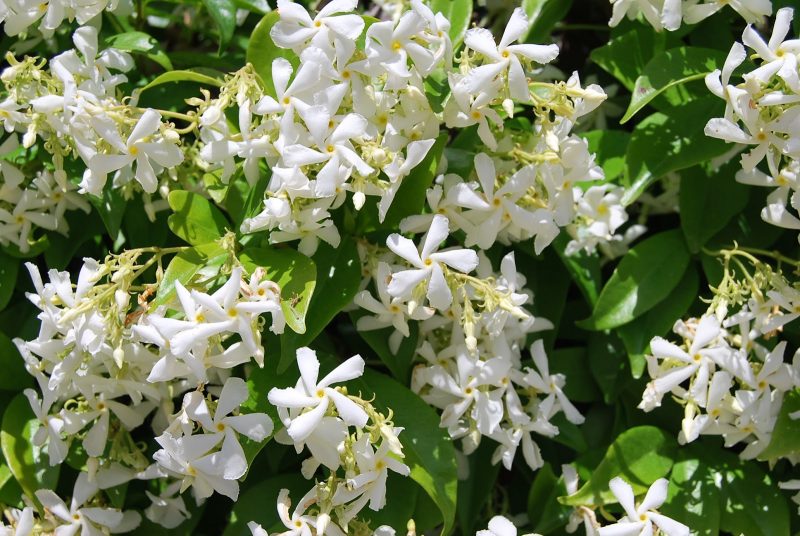
The birthplace of the plant is the southern countries of Western Europe. It grows well in Turkey, Georgia, Israel, Azerbaijan, Syria. Some gardeners confuse shrubby Jasmine with a mock-up, but these are different plants with different flowers. The flowers of the mock up are most often 4-leaf, have a pronounced bunch of stamens. In jasmine, they are smoother, flatter, with a slightly inverted core.
Outdoor landing
Planting jasmine should have specific goals. The gardener needs to decide in advance where the bush will grow. It can be in the form of a hedge, near the gazebo or just on the lawn.
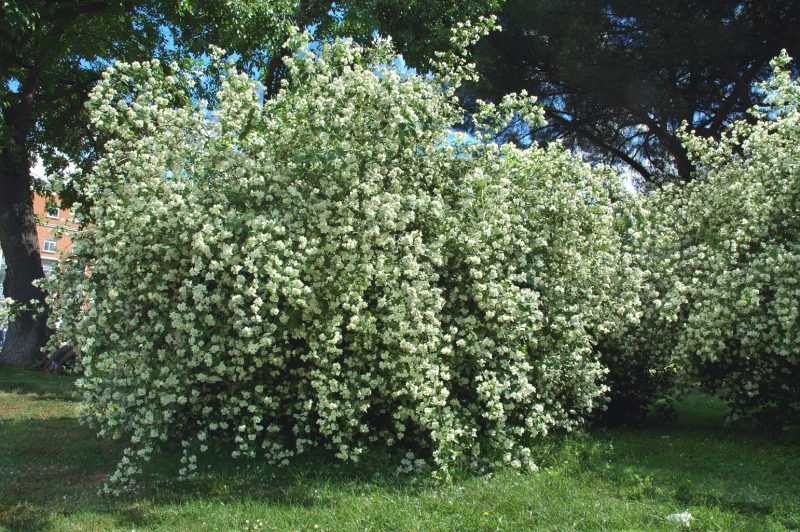
It is required to approach a choice of a place responsibly.
- The soil for the bush needs moist, with good drainage.
- The plant needs sunlight for at least 4 hours a day, so it will grow well on the south side. If the bush is often in the shade, this affects the beauty of its flowers.
- Other plants should not be placed around the circumference of the crown of the bush (at least 3 meters in diameter), as they can impede the development of rhizomes and crowns.
- If a hedge is expected, jasmine is recommended to be planted at a distance of half a meter from each other.
Preparing the landing site:
- Dig a hole to a depth of not more than 70 cm, and a width of about 50-60 cm.
- At the bottom pour a drainage layer of not more than 20 cm, which includes sand and gravel.
- Thoroughly warm the hole in the sun for several days.
It is necessary to plant bushy jasmine in the spring or in the fall. After planting in the soil, it will be necessary to fill it with a substrate, which includes peat, humus, chernozem, ash and sand.
Shrub care
Looking at jasmine flowers, you can immediately judge the quality of care for it. It is very important to properly fertilize and water the shrub.
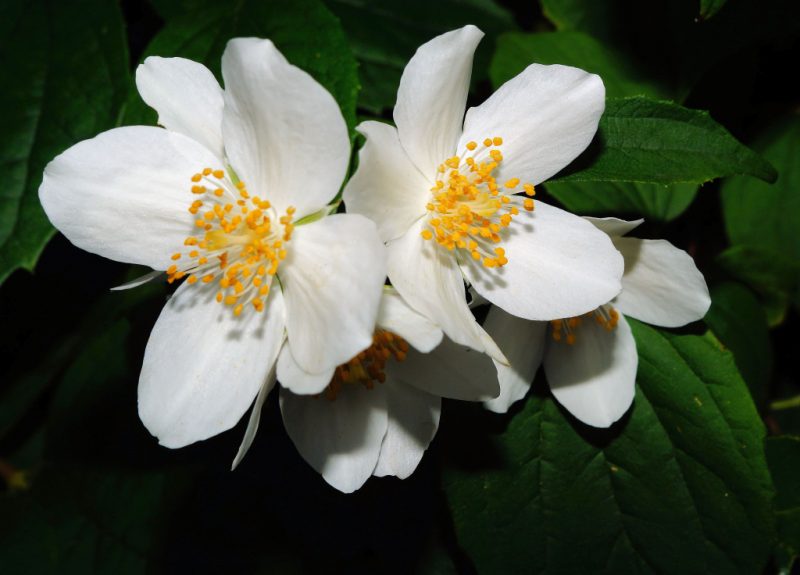
Top dressing is carried out in the spring, when the bush begins to grow vigorously.
Advantage should be given to mineral fertilizers.
Fertilizer fluid per bush:
- 5 l of water;
- 15 gr superphosphate;
- 7 g urea
- 7 g potassium sulphide.
The plant can also be fertilized with manure diluted with water in a ratio of 1:10. It is recommended to insist this liquid before use for a couple of days. The bush responds well to feeding with ash from a fire.
Caring for jasmine during the flowering period involves regular watering.
Pruning
Jasmine pruning will need to be done annually in spring. This will help improve the appearance of the shrub, rejuvenate it, significantly extend the flowering period and even increase the number of future flowers. After trimming, it is important to process all the slices with a garden var - this will preserve the appearance of jasmine.
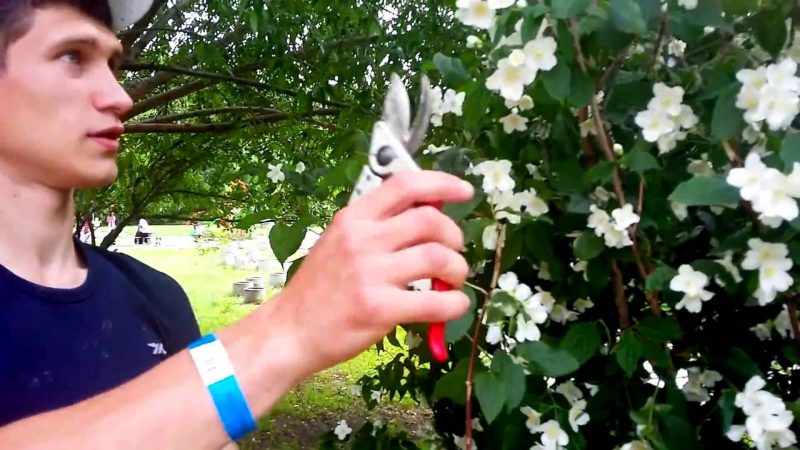
Basic pruning rules:
- it is necessary to carry out all work on the correction of the bush before the first spring buds;
- when cutting, it is recommended to maintain a certain height of jasmine, which should not exceed more than 2 meters;
- the first pruning of shrubs is carried out 3 years after planting in permanent soil;
- It is recommended to remove all the lower processes that look not up, but to the side.
7-8 years after planting, jasmine needs rejuvenation. It is carried out for 3 years.
- In the first spring, only strong trunks up to 50 cm high are left, and the rest are removed to the roots.
- Next year, 1/3 of the trunks left last year are cut.
- In the third spring, old trunks are completely removed.
All sections must be covered with garden varnish.
How to care in winter?
The last top dressing of jasmine shrubs is carried out in early autumn. Fertilizer should enter the soil a few weeks before frost, so this should be considered in a cold climate.

Then you need to remove all fallen flowers and leaves from the ground, thereby completely clearing the top of the soil. In warm countries, the bush does not shelter for the winter, as it is adapted for wintering. But if the temperature drops to severe frosts, it is better to shelter the plant.
How to do it:
- dig lightly around the bush, remove all weeds;
- sprinkle the substrate with a layer of mulch (for example, dry needles or stale manure).
It should also be remembered that only young shrubs under the age of 3 years will be required to shelter for the winter.
Jasmine bush propagation methods
Jasmine can be propagated in several ways - seeds, cuttings, layering and even dividing the root system. The most time-consuming is the cultivation of shrubs from seeds, and the easiest and fastest is the division of rhizomes.
How to propagate Jasmine:
Cuttings
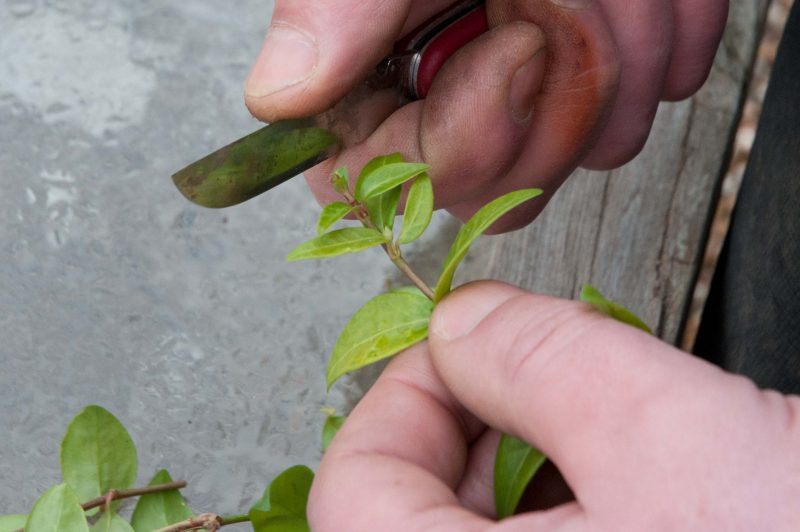
Cut the cuttings in mid-June. It is better to do this with a sharp knife. Green shoots that have a part of the old branch on themselves most successfully take root. The stalk itself should have a length of 5 cm and 2 pairs of leaves.
- For cuttings, it is necessary to prepare moist and loose soil mixed with sand.
- The handle is placed in the ground, which must be slightly trampled.
- Jasmine is covered with a greenhouse on top. It must be removed regularly to ventilate and spray the future bush.
- Such a stalk will be ready for planting on permanent soil by October.
Layering
The best time for such breeding is mid-spring (April or early May).

- You will need to choose one of the extreme shoots and press it to the ground.
- In the place where the stem will touch the soil, remove the bark by 1 cm.
- Using a wire, fasten the shoot to the support and sprinkle part of the trunk without bark with a substrate.
- Throughout the season, you will need to regularly check the condition of the layering and, if necessary, add soil or mulch.
- Periodically, the earth needs to be watered.
At the end of summer, the rooted shoot can already be separated from the bush and planted in a permanent place.
Shrub division
This method is recommended in cases where the bush is very large and has grown greatly around the perimeter. It must be dug up and divided into several equal parts (about 2-3), on which there will remain its own part of the root system.
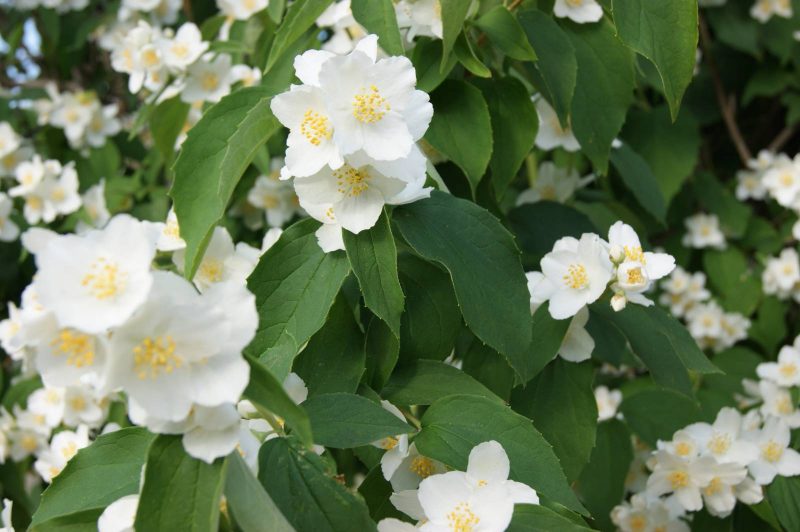
After this procedure, you will immediately need to land the resulting bushes for permanent residence. The best time for dividing the bush is early spring or late autumn.
Protection against diseases and pests
Shrub jasmine is susceptible to many diseases.
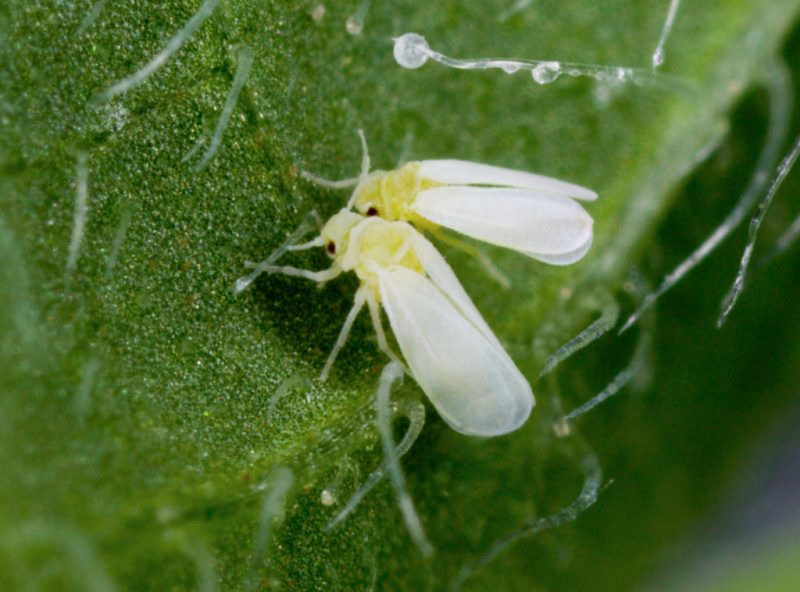
Also dangerous are:
- aphid;
- scale shield;
- mealybug;
- spider mite;
- whitefly and other harmful insects.
To cure the plant, you will need to remove all affected areas, and then carefully treat the bush with an insecticide.
How to grow a plant in Siberia?
The main rule for growing this shrub in Siberia is the correct selection of its varieties. You should choose the jasmine flower that has maximum frost resistance without the need for shelter for the winter.
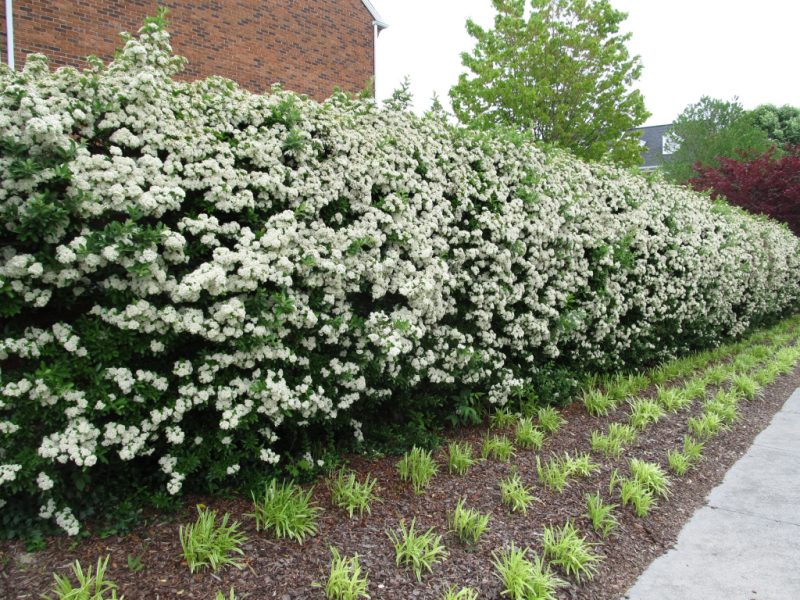
It is recommended to pay attention to thin-leaved or small-leaved jasmine, as they can tolerate frosts up to 35 degrees below zero.
The height of the crown for wintering will need to be cut to the level of future snow cover. If this is not possible, the height of the snow level can be increased by throwing it near the bush. It is better to plant young seedlings in a cool climate not earlier than August, but not later than September.
Shrubby Jasmine is unpretentious and demanding at the same time. But subject to a few rules of care, you can get a wonderful decoration of any landscape design.












